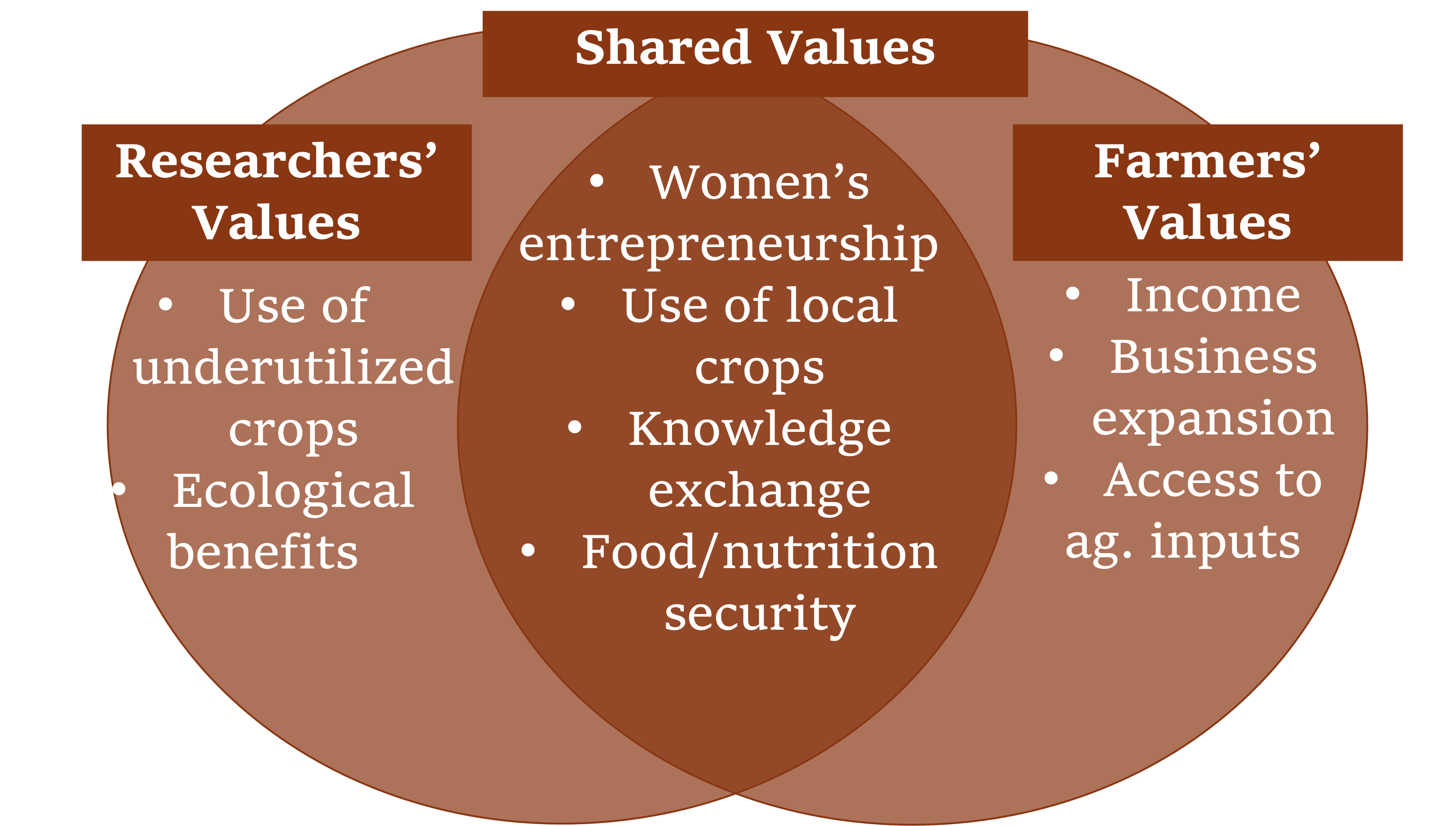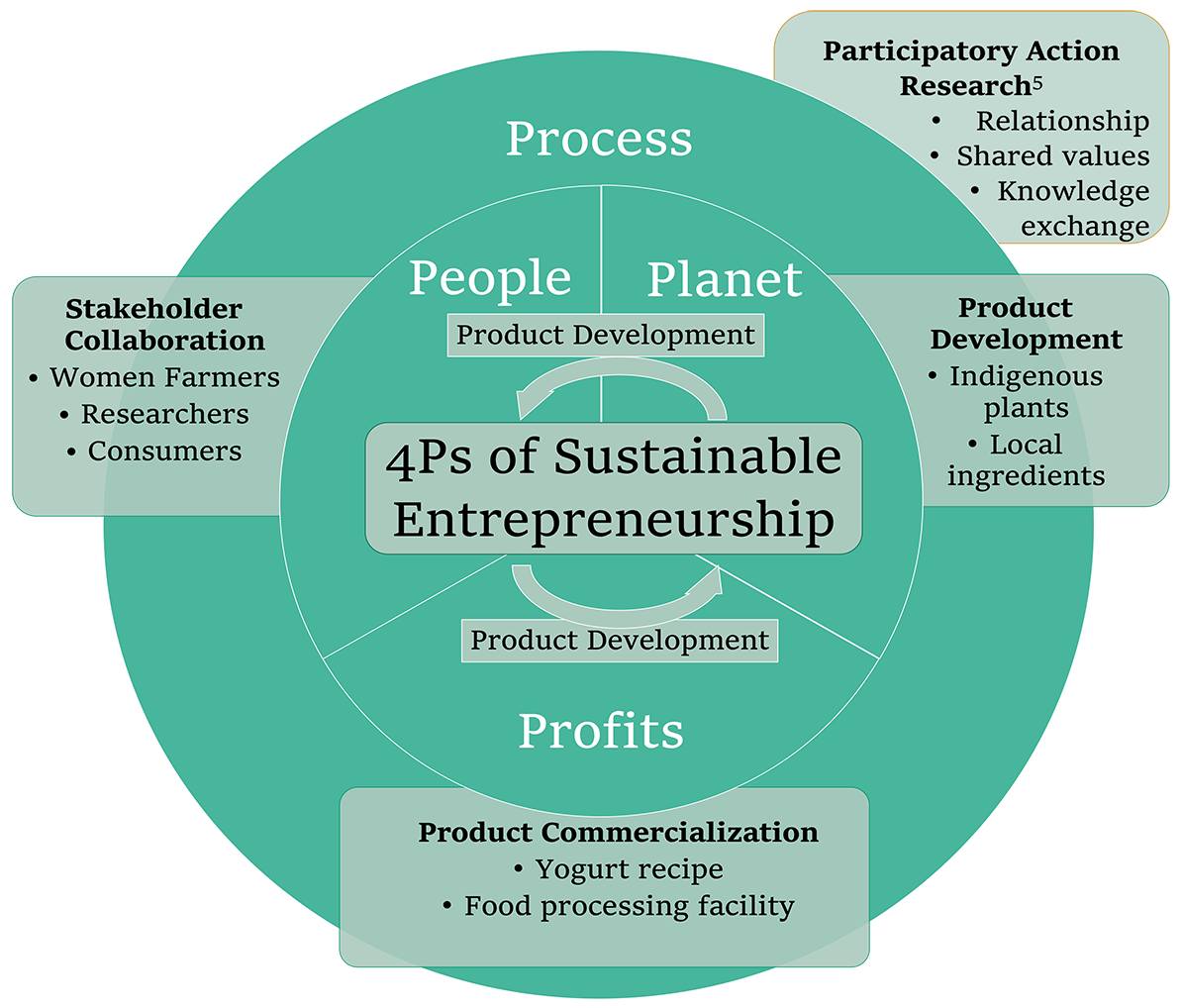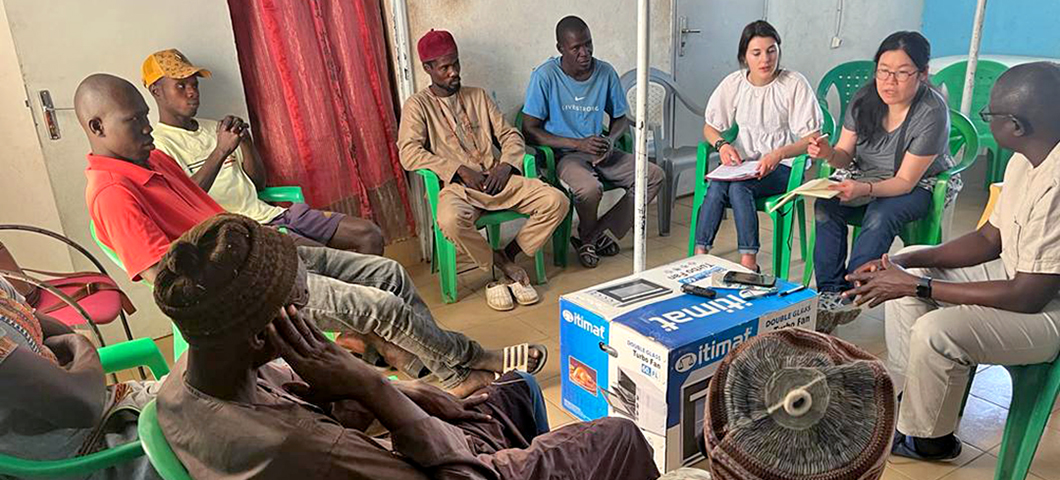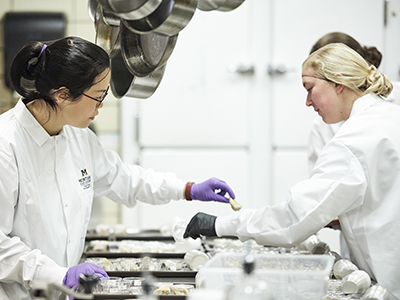Value in the eyes of farmers and researchers
A case study on Indigenous fruit fermentation and entrepreneurship
This information was presented as a scientific poster by 1st author Olivia Schwintek during the Institute of Food Technologists' Annual Event and Expo (IFT FIRST) in July 2023. Download the poster PDF.
Authors
Olivia Schwintek1, Chidimma Ifeh1, Hannah Kempf2, Sun-Hwa Kim1, Wan-Yuan Kuo1
1Department of Health and Human Development, Montana State University, Bozeman, MT,
USA
2Department of Chemical Engineering, Montana State University, Bozeman, MT, USA
Abstract
Since 2018, we have collaborated with Senegalese smallholder women farmers to develop food products with Indigenous ingredients. In 2021 the collaboration received a commitment from the African Development Bank to construct the first food processing plant in the women’s village of Ndangane. This study assessed the women farmers' insight into creating a sorghum/fruit yogurt and the values they share with us to continue their entrepreneurship and our partnership. Preliminary surveys revealed the farmers' interest in creating fermented products. and highlighted the market potential ofthe yogurt being developed in this study.In 2022, yogurt recipe development began utilizing sorghum and baobab fruit.Due to the farmers' concern to uphold Islamic food code we pivoted the grain/fruit fermentation from natural to controlled fermentation with lactic acid bacteria to ensure no alcohol content. January 2023 focus group discussions revealed that partnering communities share the value of supporting women’s entrepreneurship with us and they desire to generate a sustainable income stream via value-added processing of local crops. However unpredictable climate, immediate expenses for daily survival, and increasing costs of agricultural inputs are significant barriers that our partnering farmers prioritize to address.
Background
Over 1/3 of the world’s food supply is produced by small family farmers
- Smallholder farmers, like our partners in Ndangane, Senegal contribute significantly to global food security
Indigenous populations live on land with 80% of remaining biodiversity
- Yet many Indigenous crops are underutilized
49% of the Senegalese population is moderately or severely food insecure as of 2020
- Rates of post-harvest loss are as high as 50% for some crops in the country
Participatory Action Research (PAR) can effectively encourage entrepreneurship and development in rural communities
- PAR requires effective communication
Introduction
This study assessed the women farmers' insight into creating a sorghum/fruit yogurt and the values they share with us to continue their entrepreneurship and our partnership.
- Since 2018, we have collaborated with Senegalese smallholder women farmers to develop food products with Indigenous ingredients.
- In 2021 the collaboration received a commitment from the African Development Bank to construct the first food processing plant in the women’s village of Ndangane.
- Fermented yogurt recipe development began at MSU during Spring 2022 using sorghum grain and baobab fruit, both indigenous to Senegal.
- Due to the women’s concern to uphold Islamic food code we pivoted the grain/fruit fermentation from natural to controlled fermentation with lactic acid bacteria to ensure no alcohol content.
Methods
- Preliminary surveys of Senegal farming community
- July 2022
- May 2021
- Spring 2022 - Natural Fermentation Trials - baobab + sorghum
- June-Dec 2022 - Controlled Fermentation Trials - Lactic acid bacteria (LAB) + milk powder + baobab + sorghum
- Jan 2023 Senegal visit
- Fermentation Training
-
- Focus Group Discussions [based on Participatory Action Research (PAR) model]
- Focus group questions:
- Question 1: How has life and farming been?
- Question 2: What are benefits of value-added food processing?
- Question 3: Why is our partnership valuable?
- Question 4: How can we support you?
- Question 5: What does value-added mean to you?
- Question 6: What tools would be helpful?
- Focus group questions:
- Focus Group Discussions [based on Participatory Action Research (PAR) model]
- Spring 2023 - Recipe Optimization
- Sensory profile
- Share recipe resources with farmers
Results
- Preliminary surveys
- July 2022
- Interest in making a fermented baobab beverage
- 11/12 interested
- 1/12 a little interested
- Interest in making a non-alcoholic fermented beverage
- 11/12 interested
- 1/12 very interested
- Interest in making a fermented baobab beverage
- May 2021
- 6/10 used fermentation currently
- 9/10 interested in making and selling fermented products
- 90% of respondents expressed interest in creating both fresh and dried fermented products.
- They indicated that consumers would value products’ health benefits but had not seen fermented products made with nutritious Indigenous plants, highlighting the market potential of the yogurt being developed in this study.
- July 2022
- Initial fermentation trials Spring 2022
- PH drop
- Low LAB counts
- LAB fermentation trials
- Concern for ethanol
- ethanol analysis
- PH drop
- LAB counts in Nov
- LAB counts in March
- Concern for ethanol
- Fermentation training
- Focus group discussions:
|
Challenge
|
Support
|
Quote
|
|---|---|---|
|
Product manufacturing
|
Recipes
|
“Maybe more training on recipe or process/fabrication of making Bonbon Bouye so no one will make a mistake when making that.” “The fermentation also. We would love to learn more about the process and different recipes to make it.” “So the two things of training and coaching may be important for supporting the women farmers.” |
|
Access to tools and inputs/yields
|
Tools/machines
|
“We are only relying on the farming and the yields went down because the costs of the inputs (seeds and fertilizer) are going up. We were producing less and the yield was going down.” “We don't have the tools or machines.” |
|
Access to ingredients
|
Processing equipment/facility
|
“We are facing also the increase of prices of products; the increase of food prices, like it is globally. Price of sugar and oil is going up and access to those kinds of products is affected.” "We will be having the facility, we learn something, we have a machine so maybe they will do something that will give us income.” |
|
Technology knowledge gap
|
Financial training
|
“Maybe we will need support on the technology side because some of the technology
we aren't aware of. Technology can make it easier to make the products.”
|
|
Financial knowledge gap
|
Technology support
|
“Once we have the plant we would love to have a plan for different training models
or capacity building models.”
|
-
- Benefits of value-added/partnership:
- Use of local ingredients; health/nutrients; income generation; opportunities in village; expansion; knowledge exchange; access to processing facility
- During our January visit to Senegal, focus group discussions were held and farmers identified the following benefits of our collaboration in value-added food processing: the use of local ingredients, nutritional benefits, opportunity to establish a sustainable business to break out of the cycle of poverty, and knowledge exchange.
- Key quotes from discussions:
- Benefits of value-added/partnership:
"What we are looking for is to be in the village and to work with them to have opportunities in the village so we can stay here."
“We are facing the pressure of family needs. We have the peanuts but we need to pay to the drug store, for food, for school and it is only what we have so we are not waiting to market it. You just market it so you can take care of your family. But if we had the capacity to store it we would be more willing to make value-added products.”
"We know that there are many villages in Senegal but you decided to come to Ndangane and we have seen the cement for the construction to start. There is nothing that hurts us from your visit and we see the benefit because we will be having the facility, we learn something, we have a machine so maybe they will do something that will give us income. We see a lot of benefit. You thank us but we want to thank you for coming here because you selected Ndangane out of more than 2000 (other villages)."
Conclusion
A LAB-inoculated fruit/grain yogurt is a viable product for manufacturing by our partnering women farmers based on their insight.
- Farmer interest in fermentation
- Availability and sensory potential of local ingredients
- Construction of the processing plant with potential cold-storage and drying capacity
- No ethanol after fermentation
Shared values between MSU and the farmers exist (see Venn diagram below).
- Disparity exists in researchers’ stronger focus on planet & people whereas farmers’ stronger focus is on the profit & people components of 4P model (see model below).
Future direction should consider educational and language barriers to facilitate cross-cultural exchange.


Venn diagram of shared and distinct values
Holistic model of sustainable entrepreneurship (modified from Elkington’s concept of 3Ps and Triple Bottom Line)6
Acknowledgements
This research was funded in part by the Foundation for Food & Agriculture Research New Innovator Award (FF-NIA21-0000000070) and by Montana State University through the Undergraduate Scholars Program. Conference travel funding was provided by the Montana State University College of Education, Health, and Human Development. The content of this publication is solely the responsibility of the authors and does not necessarily represent the official views of any of the above-named entities. We also acknowledge our collaborating farmers in Ndangane, Senegal, Aliou Ndiaye of Umbrella Support Unit, and Kaolack Chamber of Commerce.
References
- Small family farmers produce a third of the world's food. FAO. (2021, April 23). Retrieved November 25, 2022. from https://www.fao.org/news/story/en/item/1395127/icode/
- Recio E., Hestad D. (2022, April 22) Indigenous Peoples: Defending an Environment for all. IISD. https://www.iisd.org/articles/deep-dive/indigenous-peoples-defending-environmentall#:~:text=There%20are%20approximately%20370%20million%20Indigenous%20Peoples%20today,are%20the%20most%20effective%20stewards%20of%20the%20environment
- FAO. (2023). Prevalence of moderate or severe food insecurity in the population. The World Bank. https://data.worldbank.org/indicator/SN.ITK.MSFI.ZS?end=2020&start=2014&type=shaded&view=map&year=2020
- Cirad. (2020, July 21). Covid-19 and food security: Increased food losses in Africa. Cirad. https://www.cirad.fr/en/cirad-news/news/2020/science/covid-19-food-losses-and-wastage-in-africa
- Baum, F., MacDougall, C., & Smith, D. (2006). Participatory Action Research. Journal of Epidemiology & Community Health, 60(10), 854–857. https://doi.org/10.1136/jech.2004.028662
- Pennsylvania State University. (2020). The 3Ps and Triple Bottom Line. https://www.e- education.psu.edu/ba850/node/643








